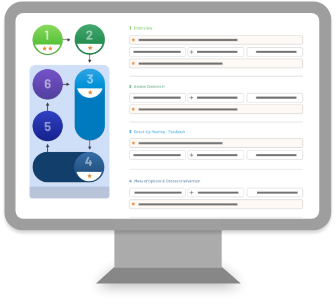Coaches
This section is intended for instructional coaches, administrators, and other school professionals who regularly consult with teachers about culturally responsive practices, student engagement, and classroom management. Becoming proficient in the Double Check coaching model requires that you develop knowledge and skills in (1) implementing the Double Check structure and procedures and (2) conducting collaborative coaching meetings using motivational interviewing skills. Motivational interviewing is a way of communicating with others that helps elicit talk about making a change. It is a helpful skill to employ when consulting with teachers.
Coaches

Double Check Coaching Process

This section provides an overview of the procedures and tools needed for coaches to conduct an effective Classroom Check-Up. A flowchart is provided to illustrate the overall process and the key steps:
1) Interview
2) Assess Classroom
3) Check-Up Meeting
4) Selecting an Intervention
5) Implementing the Intervention
6) Evaluating the Intervention
Clicking within each step takes you to resources, videos, forms, and detailed descriptions for how to improve areas that need attention and to implement strategies suggested during the coaching process.

Double Check Teacher Resources
The Double Check CCU provides tools for teachers to improve areas that need attention and to implement strategies suggested during the coaching process.
Get started building effective classroom management skills: